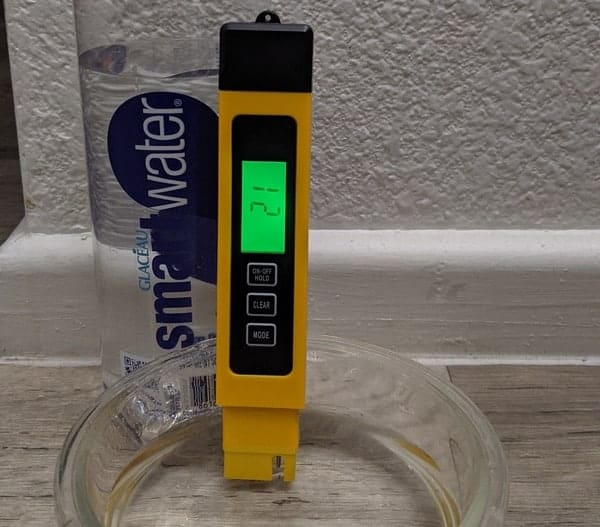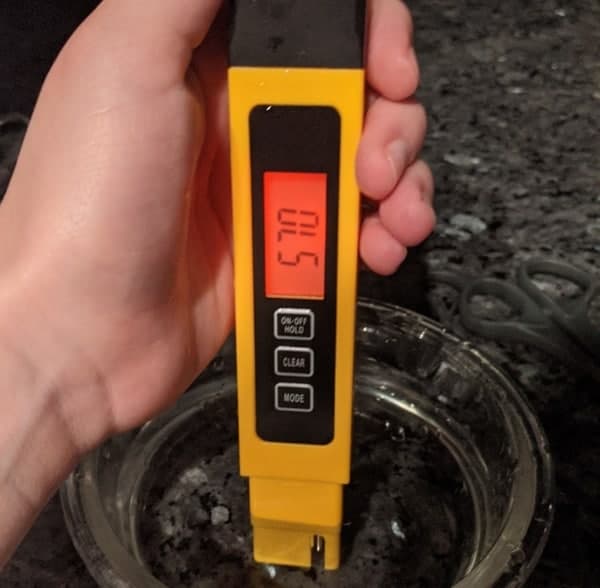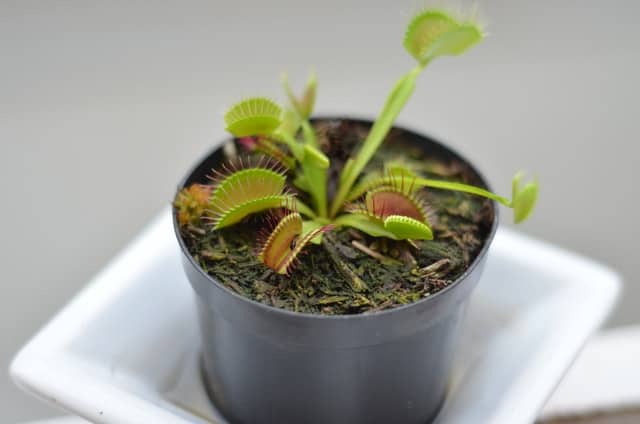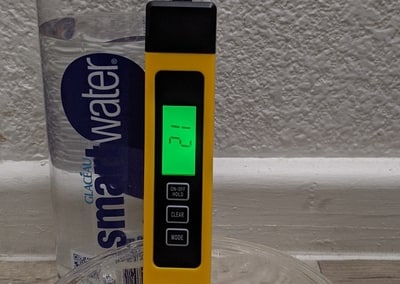To keep Venus flytraps healthy, they should only be watered with pure water sources. But, how pure does the water need to be? Is SmartWater acceptable for Venus flytraps?
SmartWater contains 20 to 27 parts per million (ppm), which is below the maximum level (50 ppm) recommended for Venus flytraps. SmartWater is acceptable for Venus flytraps; but, distilled water, reverse osmosis water, and rainwater are optimal for carnivorous plants.
This article will give you an overview of which water works best for Venus flytraps. The recommendations below will help you keep your plant healthy and thriving.
Is SmartWater Safe for Venus Fly Traps?
In the wild, Venus flytraps have little to no exposure to nutrients in the soil or water. As a result, they have developed an intolerance to minerals and nutrients. Electrolytes in standard bottled water and other additives can be harmful to Venus flytraps.
Venus flytraps should only be water with pure water sources. But, what is pure? The general recommendation is to employ water with less than 50 parts per million (50 ppm). Such measurement is an indicator of how many dissolved solids are in the water. Lower measurements are very beneficial for Venus flytraps.
A Total Dissolved Solids (TDS) meter can measure the ppm in different water sources. The measuring process is straightforward (dip the tool in the water and see the result), and you can buy a TDS meter for less than 20 dollars. Here is a link to the one I use so that you can check the current price and specs on Amazon.com.
I used a TDS meter to assess if SmartWater is safe for Venus flytraps. The picture below shows my simple setup and the reading of 21 ppm.

SmartWater contains 20-27 ppm, which is within the acceptable range for Venus flytraps. However, the best water sources for Venus flytraps contain zero (or close to 0) ppm. Pure distilled water and reverse osmosis water have 0 ppm.
Is SmartWater distilled water?
SmartWater is purified through a distillation process. It also contains additives for flavor, which are beneficial for humans but harmful for Venus flytraps and other carnivorous plants.
Personally, I would feel confident employing SmartWater if I do not have many options. Due to its cost and mineral content, using a cheaper and purer option is the best approach.
In the next section, you will learn the best and worst water sources for Venus flytraps.
Water for Venus Flytraps: SmartWater vs Others
SmartWater does not contain a large number of dissolved solids. With many different water options out there, there are many better options and many much worst. In this section, we will compare it to other water sources.
The Best Water for Venus Flytraps
These three water types contain zero or close to zero 0 ppm. They are pure water, which is completely safe for Venus flytraps.
- Distilled water
- Reverse osmosis water
- Rainwater
Pure distilled water and reverse osmosis water contain 0 ppm. They are relatively cheap and easy to find in most grocery stores. Both options are equally suitable for venus flytraps. However, most venus flytrap owners tend to use distilled water more often.
Distilled water is more readily available and cheaper than reverse osmosis water. I buy distilled water in water and ice stores for 20 cents a gallon. Also, you can find them for a dollar a gallon in most food stores.
Rainwater usually contains 0 ppm or a very low number. In the wild, Venus flytraps rely on rainwater almost exclusively. Collecting rainwater usually requires building a setup, but rainwater is optimal water for Venus flytraps if you have one in place.
The Worst Water for Venus Flytraps
- Tap water
- Boiled water
- Filtered water
Tap water quality varies across cities and even neighborhoods. Generally, tap water can be extremely harmful to Venus flytraps as it might contain over 100 ppm.
I measured the tap water quality in my home with a TDS meter and measured results of over 500 ppm consistently over several days. Such a high amount of solids would definitely kill a Venus flytrap over time.

Not all tap water quality is the same. Due to the variability, you shouldn’t risk your plant by employing tap water blindly. Measure the water composition with a TDS meter or buy distilled water to be safe.
Boiling tap water kills bacteria but does not help extract minerals and additives in the water. On the contrary, it can make water less suitable for carnivorous plants as it retains the soils, but you end up with fewer liquids.
Filtering tap water can eliminate some particles in the water, but it is usually not enough. Only employ this method if you have a TDS meter, and you can verify the filter is helping substantially.
Minerals in the water do not kill Venus flytraps immediately, but they weaken the plant. Then, they start building up in the soil and can eventually kill the plant. For this reason, employing the incorrect water source can be extremely dangerous.
SmartWater vs Others
Distilled water, reverse osmosis, or rainwater are optimal for Venus flytraps. SmartWater has an acceptable composition but is substantially worst (0 ppm vs. 20-30 ppm). Tap water, filtered water, and boiled water usually contain many harmful minerals for Venus flytraps.
How to Water Venus Flytraps
Now that you learned what water is best for Venus flytraps, we can cover an overview of how to water a Venus flytrap.
The process of watering Venus flytraps is critical. Venus flytraps require consistently humid environments year-round. The soil must be moist at all times but not flooded. The water tray method is a common strategy to achieve a high humidity environment.
When water a Venus flytrap, water until the soil is moist all around, but it is not muddy. Venus flytraps thrive in humid places, but they do not require swamp-like conditions. An environment with unnecessary moisture can actually cause issues, such as root rot (more on root rot prevention and fixes here).
The water tray method is effective at keeping the soil humid, but not excessively. This is how you do it:
- Place your Venus flytrap pot in a tray
- Fill up the tray with pure water, up to 1 inch in depth
- wait until the water in the tray dries up and refill

Finally, here are some ninja tips for watering Venus flytraps and keeping them thriving:
- Reduce the watering frequency during dormancy. When Venus flytraps are dormant, they consume less water.
- If you make a mistake and employ the wrong water for your Venus flytrap, follow the instructions in this article to save it.
- Preferably water your plant from the bottom with the tray method. Watering from the bottom promotes root growth and prevents overwatering.
- A combination of proper watering and suitable soil is critical to keeping Venus flytraps healthy. This article can help you choose the right soil for your plant: The Best Soil Options for Venus Flytrap (Plus Potting Tips)
- Employ pots with drainage. It is challenging to water Venus flytraps appropriately when set in a pot with no drainage holes.
With this article, you have learned critical details on the Venus flytrap watering process. But, there are many other care considerations needed to keep Venus flytraps alive. For a complete overview, this article covers all you need to know about growing Venus flytraps: Ultimate Venus Flytrap Care Guide.


